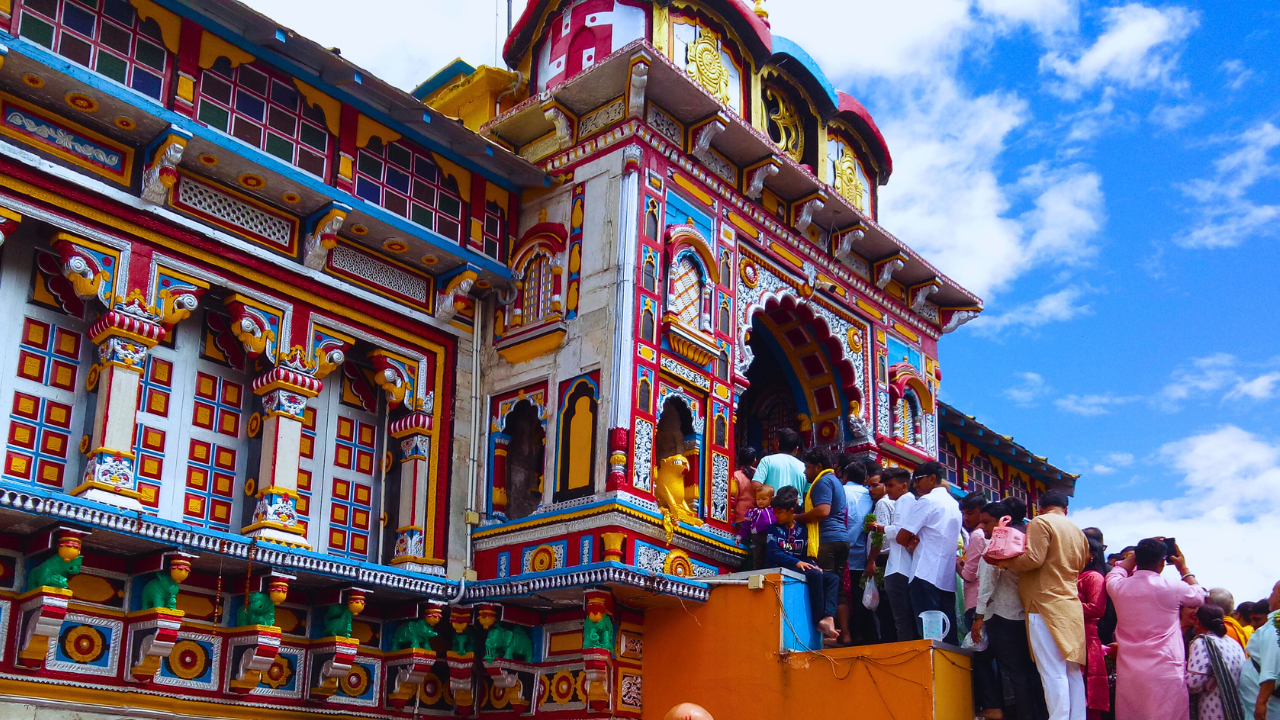
The town of Badrinath, cradled in the lap of the Garhwal Himalayas, has always held a special place in the hearts of pilgrims and travelers alike. Known as one of the four sacred Char Dham pilgrimage sites, Badrinath is not just a destination—it’s a spiritual journey. Recently, I had the privilege of visiting this revered town, and the experience left an indelible mark on my soul.
Badrinath is more than just a destination; it’s a pilgrimage of the soul. The journey through the Himalayas, the divine presence of the Badrinath Temple, and the natural beauty of the region combine to create an experience that transcends the ordinary. Whether you seek spiritual solace, natural beauty, or simply a journey into the heart of the Himalayas, Badrinath offers all of this and more.
The Journey Begins: Rishikesh to Badrinath
My journey began in the tranquil town of Rishikesh, often referred to as the "Gateway to the Garhwal Himalayas." Rishikesh, perched at an altitude of 372 meters above sea level, is the starting point for many pilgrimages and treks into the Himalayas. The town, with its ashrams, temples, and the serene flow of the Ganges, offers a spiritual prelude to the journey ahead.
From Rishikesh, Badrinath is approximately 295 kilometers away. The route, while long, is breathtakingly beautiful. The drive took about 10 to 12 hours, winding through narrow mountain roads, with the altitude gradually increasing as we ascended deeper into the Himalayas. The journey itself was as enriching as the destination, filled with picturesque landscapes, towering peaks, and the ever-present Alaknanda River flowing beside us.


TThe Road to Devprayag, Rudraprayag, and Joshimath
As we drove towards Badrinath, the first major stop was Devprayag, where the Bhagirathi and Alaknanda rivers merge to form the holy Ganges. The sight of the two rivers converging was a powerful reminder of the spiritual significance of this land. The next stop was Rudraprayag, another sacred confluence, where the Mandakini and Alaknanda rivers meet. These Prayags, or confluences, are integral to Hindu mythology, each with its own legends and stories.
Continuing the journey, we passed through the bustling town of Joshimath, located at an altitude of 1,890 meters. Joshimath is not only a hub for pilgrims heading to Badrinath but also a gateway to the Valley of Flowers and Hemkund Sahib. The town has an ancient charm, with its temples, monasteries, and the revered Adi Shankaracharya’s math..
Arrival in Badrinath: A Town Wrapped in Divinity
As we ascended to Badrinath, the air grew crisper, and the landscape more dramatic. At an altitude of 3,133 meters (10,279 feet), Badrinath is surrounded by the snow-clad peaks of the Nar and Narayan mountain ranges, with the Neelkanth peak towering above the town like a sentinel. The sight of these majestic mountains was humbling, and it felt as though we had entered a realm closer to the heavens.
Badrinath is a small town, but its spiritual significance looms large. The streets were filled with pilgrims, sadhus, and travelers, all drawn by the allure of the sacred Badrinath Temple. Despite the cold and the thin air, there was an energy in the town—a palpable sense of devotion and reverence.
The Badrinath Temple: A Sacred Abode
The Badrinath Temple, dedicated to Lord Vishnu, is the heart and soul of the town. It is one of the holiest temples in Hinduism, part of both the Char Dham and the Chota Char Dham pilgrimages. The temple’s origins are ancient, with the current structure believed to have been established by Adi Shankaracharya in the 8th century.
As I approached the temple, the first thing that struck me was its vibrant façade. Painted in bright colors—red, blue, yellow—the temple stood in stark contrast to the white peaks behind it. The Tapt Kund, a natural hot spring just below the temple, is where pilgrims take a purifying dip before entering the shrine.
Inside the temple, the sanctum sanctorum houses the black stone idol of Lord Badrinarayan, seated in a meditative pose. The atmosphere was charged with devotion as priests performed rituals, and the sound of hymns and prayers filled the air. Standing there, among hundreds of devotees, I felt a deep sense of peace and connection.
Exploring Badrinath: Mana Village and the Surrounding Area
After paying my respects at the temple, I took some time to explore the surrounding area. A short drive from Badrinath is Mana, the last village before the Indo-Tibetan border. The village, perched at an altitude of 3,200 meters, is considered one of the highest in India. The simplicity of life in Mana, with its stone houses and narrow lanes, was captivating.
Here, I visited the Vyas Gufa, where the sage Ved Vyas is believed to have composed the Mahabharata, and the Bhim Pul, a natural stone bridge over the Saraswati River. The roaring sound of the river, combined with the rugged beauty of the landscape, made it a memorable visit.
Reflections on the Return Journey
As I began my descent from Badrinath, the sense of tranquility stayed with me. The journey back to Rishikesh was a time for reflection, allowing me to absorb the experiences of the past few days. The mighty Himalayas, the sacred river confluences, the ancient temples—all of these reminded me of the timeless spiritual legacy of this land.
For more details and information you can contact us at

